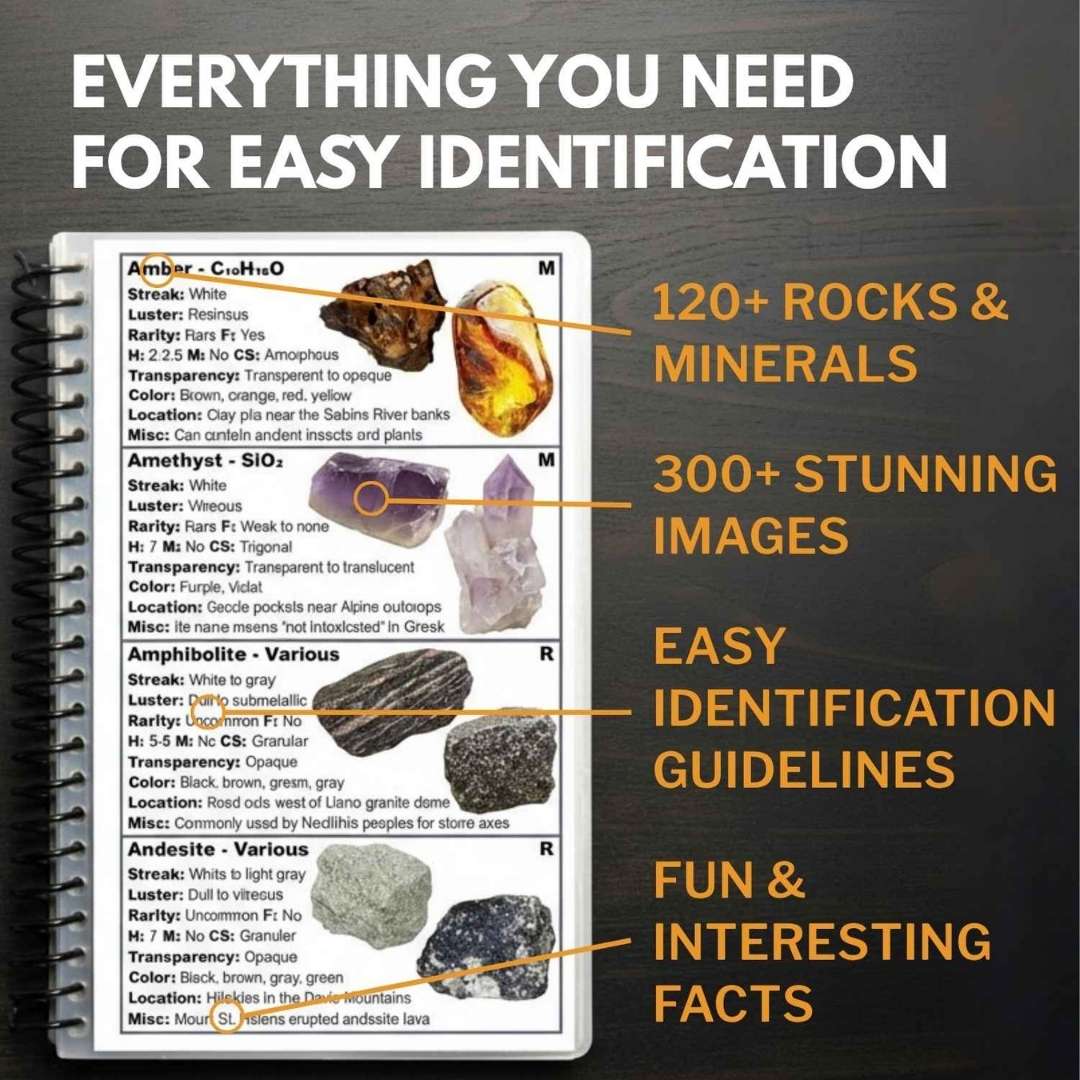There are a lot of options for hunting for gems in Texas with such a huge state and the variety of sparkling treasures waiting to be found. From the wide open deserts to the rolling hills and riverbeds there are gems hiding in plain sight.
People have discovered colorful topaz shining in the Hill Country and pretty quartz crystals along streams and trails. Some lucky hunters even find agates and jasper with amazing patterns and colors.
Gem hunting in Texas is like a real life treasure hunt where every rock could hold a surprise. You do not need fancy tools to get started just a good eye and a love for adventure. Exploring for gems is a fun way to spend time outdoors and learn about nature at the same time.
Gem hunting in Texas is like a real life treasure hunt where every rock could hold a surprise. You do not need fancy tools to get started just a good eye and a love for adventure. Exploring for gems is a fun way to spend time outdoors and learn about nature at the same time.
If you are ready to find out where to go and how to start your hunt then keep reading because Texas has gems waiting for you.
And once you’re out there, our Rocks & Minerals Of Texas Identification Guide is the only other thing you’ll need to make sure you know exactly what you’ve found. It saves hours of guesswork and keeps you from walking right past something incredible without realizing it.
- The extensive local experience and understanding of our team
- Input from several gem hunting groups and organizations
- The accessibility of the mining locations
- Safety and potential hazards when collecting
- Private and public locations
- A desire to include locations for both experienced gem hunters and those who are just starting out
Overall, we’ve been able to put together a great list that anyone can use to locate a lot of beautiful gems.
The Gemstones Found In Texas You Can Mine
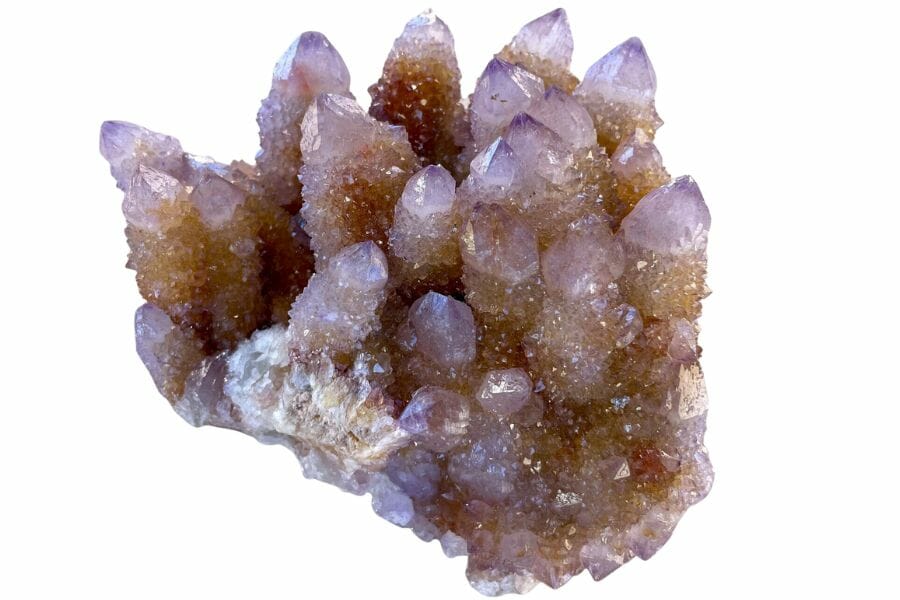
Photo provided by Exotic Crystals
Our state is considered the second largest state in both area and population in the country, so it wouldn’t come as a surprise that it is well blessed with various kinds of gemstones. If you’re wanting to discover these, continue reading on because we will share with you best places to find them here.
Apart from this guide for Texas, we also came up with other guides to help you find gem mines near you, wherever you are. With the help of our guide and your own luck, you may just uncover the most precious gemstones you’ll have in your collection!
Here’s a detailed look at our state’s unique rocks, gems, and minerals.
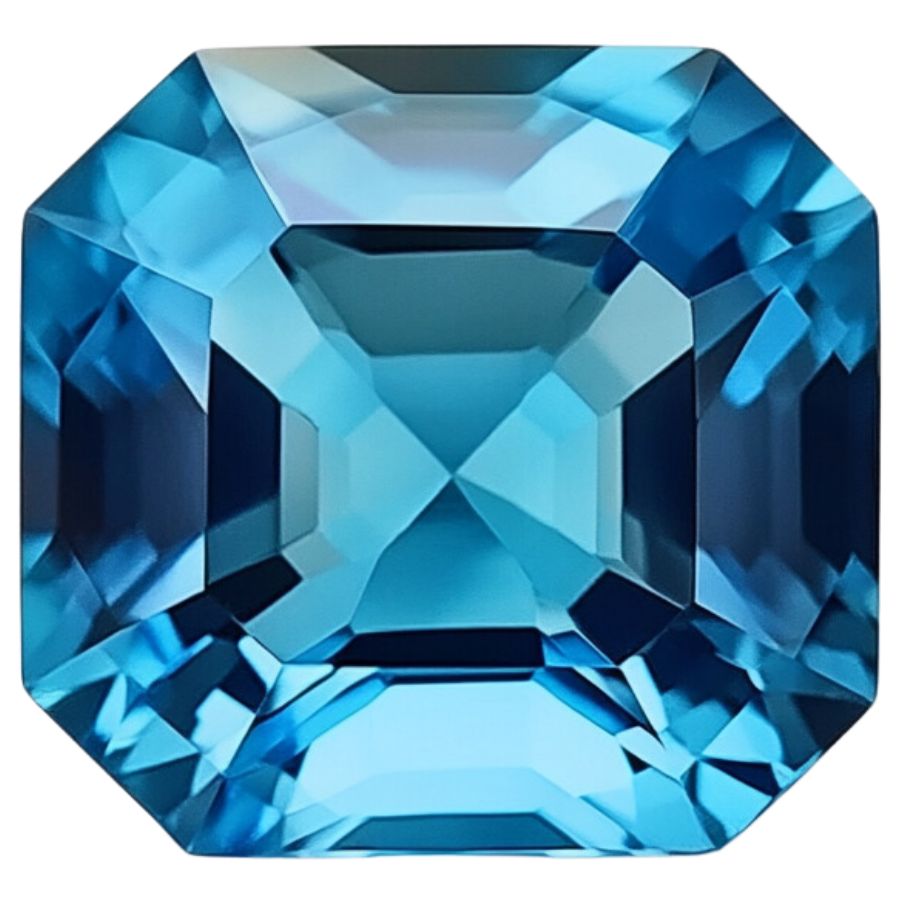
Topaz
Topaz is a mineral made of aluminum and fluorine, valued for its stunning clarity and vibrant colors. In Texas, most of the topaz you’ll find is colorless or pale blue, but sometimes it comes in shades of light green or even golden brown.
The rarest and most sought-after is the natural sky-blue topaz, which can be found in certain parts of the state. What’s unique about Texas topaz is that it’s usually found as loose crystals in stream beds or rocky areas rather than embedded in rock formations.
Why It’s Valuable
Topaz is highly prized for its beauty and durability. It scores an 8 on the Mohs hardness scale, which means it’s tough enough to be cut into intricate shapes for jewelry but delicate enough to shine brilliantly when polished.
The natural pale blue topaz found in Texas is particularly valuable because it doesn’t need heat treatment to achieve its color, unlike some topaz from other regions.
Plus, there’s something extra special about finding a gemstone with your own two hands—it’s like owning a little piece of Texas history.
Great Places to Find It in Texas
If you’re ready to go on a treasure hunt, we’ve prepared a comprehensive guide to help you find Topaz in Texas. Here are three top places worth checking out:
- Mason County: This is the most famous place in Texas to find Topaz. The Llano Uplift area is known for its gem-rich stream beds, and several ranches in Mason County allow visitors to dig and sift for topaz.
- Seaquist Ranch: Located near the town of Mason, this private ranch is a top pick for gem hunters. For a fee, you can spend the day searching through the dirt and rocky terrain for topaz crystals.
- Bar M Ranch: Another great spot in Mason County, the Bar M Ranch offers guided gem-hunting experiences. They even provide tools and tips to help you increase your chances of finding a gem.
To explore more spots, refer to our Guide To Finding Topaz In Texas.
If you want REAL results finding incredible rocks and minerals in Texas you need one of these 👇👇👇
Finding the coolest rocks in Texas isn’t luck, it's knowing what to look for. Thousands of your fellow rock hunters are already carrying Rock Chasing field guides. Maybe it's time you joined the community.
Lightweight, mud-proof, and packed with clear photos, it’s become the go-to tool for anyone interested discovering what’s hidden under our red dirt.
Join them, and make your next rockhounding trip actually pay off.
📘 Order the Texas Field Guide Now →
What makes it different:
🚙 Field-tested across Texas rivers, ranchlands, and roadcuts.
📘 Heavy duty laminated pages resist dust, sweat, and water.
🧠 Zero fluff — just clear visuals and straight-to-the-point info.
📍 Find hidden gems like Blue Topaz, Texas agate, and petrified wood fast.
⭐ Rated 4.8★ by real collectors who actually use it in the field.

Amethyst
Amethyst is a gorgeous purple variety of quartz that’s cherished by gemstone lovers and collectors alike. Its stunning color comes from trace amounts of iron and natural radiation over millions of years.
Texas has its own unique spots where you can find some stunning specimens (You can find list of locations to find Amethyst in Texas here.) You’ll mostly come across small crystals or clusters, but they’re still breathtaking in their own way.
Why It’s Valuable
There’s something magical about amethyst that goes beyond its beauty. For one, it’s considered a semi-precious gemstone, which makes it desirable for jewelry and collections.
Plus, it’s said to have calming and spiritual properties, so people often use it in meditation or as a good luck charm.
Great Places to Find It Here
If you’re up for a little adventure, there are some awesome places in Texas where you might just find your own amethyst. Here are a few recommendations:
- Llano County: This area is known for its fascinating geology and is one of the better spots to hunt for quartz crystals, including amethyst. Check out road cuts or rocky areas, especially near granite outcroppings.
- Big Bend National Park: While primarily known for its stunning landscapes, some rockhounds have reported finding small amethyst crystals in this region. Remember to follow park guidelines and leave nature as undisturbed as possible.
- East Texas Piney Woods: Though it’s not as common, local streams and creeks in the Piney Woods area occasionally turn up quartz varieties, including small amethyst specimens. Focus on gravel bars after a good rain.
See our Guide To Finding Amethyst In Texas for more prospecting spots.
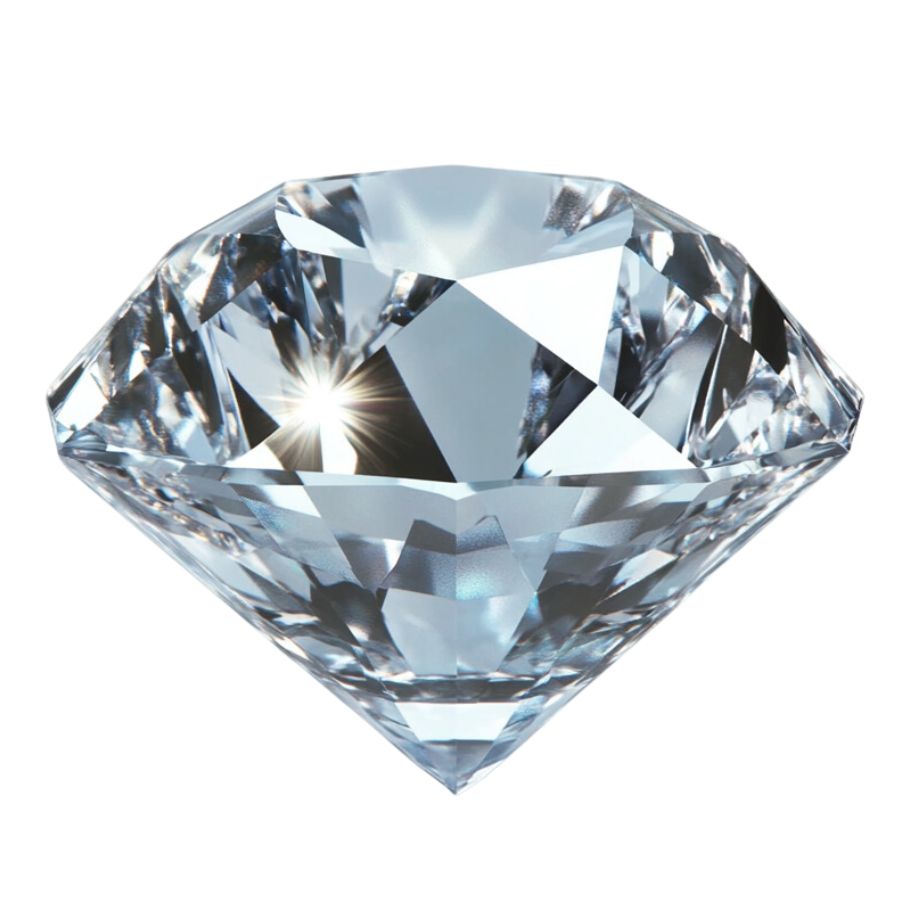
Diamond
There have been reports of small diamonds and diamond-like minerals discovered in certain areas of Texas. Most of these are alluvial diamonds, meaning they were carried here by natural forces like rivers or glaciers.
When you’re ready to start exploring, our guide to finding Diamond in Texas has got you covered.
Why Diamonds Are Valuable
So, what makes diamonds so sought-after? First, they’re incredibly durable—the hardest natural substance on Earth, in fact. They’re also beautiful, with a brilliance and sparkle that’s hard to beat.
Beyond their aesthetic appeal, diamonds symbolize wealth, love, and commitment. Some even say that owning a diamond gives you a piece of Earth’s history, as these stones can be billions of years old.
Great Places to Find Diamonds in Texas
If you’re itching to go on a treasure hunt, here are some great places where people have reported finding diamonds or other gemstones in Texas:
The Gulf Coast Beaches: Occasionally, diamonds and other gemstones are said to wash ashore along the Gulf Coast. While this is rare, it’s a beautiful spot to explore and enjoy nature, even if you don’t strike it rich.
The Llano Uplift: This area in Central Texas is known for its unique geology and has yielded diamonds and other precious stones in the past. While diamonds are rare here, you’re more likely to come across quartz, topaz, or garnet.
The Red River Area: The Red River has been known to carry small, gem-quality diamonds washed downstream from their original sources. A keen eye might just reward you with a sparkling find among the sand and gravel.
Our Guide To Finding Diamond In Texas lists many more locations.
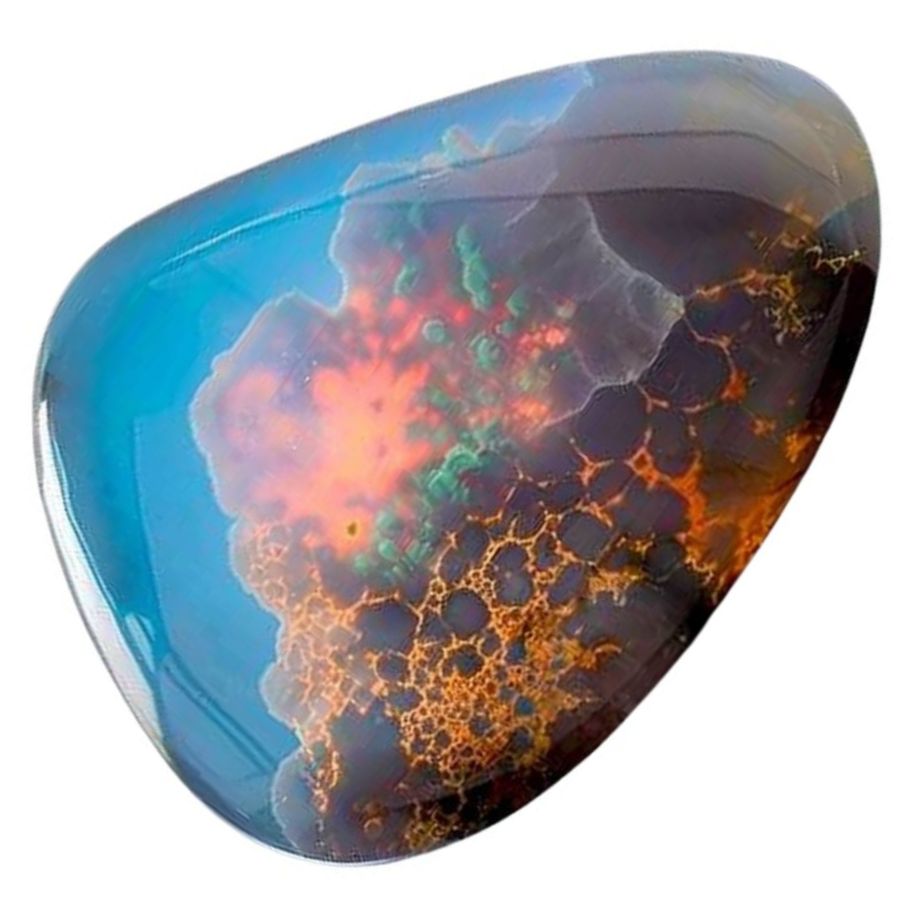
Opal
Opal is a mineral made up of silica and water. Its mesmerizing shimmer, called “play-of-color,” comes from how light interacts with its structure.
In Texas, you’ll mostly find two kinds: common opals and fire opals. The common opals here often have earthy tones, like whites, grays, or light browns, while fire opals are known for their fiery oranges and reds.
Why It’s Valuable
Opal is valuable for several reasons. First, no two opals are ever alike—their colors and patterns are completely unique. People love using them in custom jewelry because of their one-of-a-kind charm.
In addition, opals found in Texas often have a rich, local story tied to them, which makes them extra meaningful to those of us who call this state home.
Great Places to Find Opals in Texas
If you’re thinking of hunting for opals, check out our complete guide to tracking down Opal in Texas. Here are a few recommendations to get you started:
Llano Uplift Region: This region is famous for its diverse geology, and you might stumble upon opal alongside other minerals like quartz and garnet. It’s a perfect spot for a day of treasure hunting.
Spencer’s Ranch in West Texas: This area is a hidden gem for rockhounds. While the opals found here are typically of the common variety, the thrill of the hunt and the beautiful Texas landscape make it worth the trip.
Central Texas Fossil Beds: The fossil beds sometimes reveal some exciting finds, including opals. It’s a great place to combine fossil hunting with gemstone exploration.
Further locations are listed in our Guide To Finding Opal In Texas.
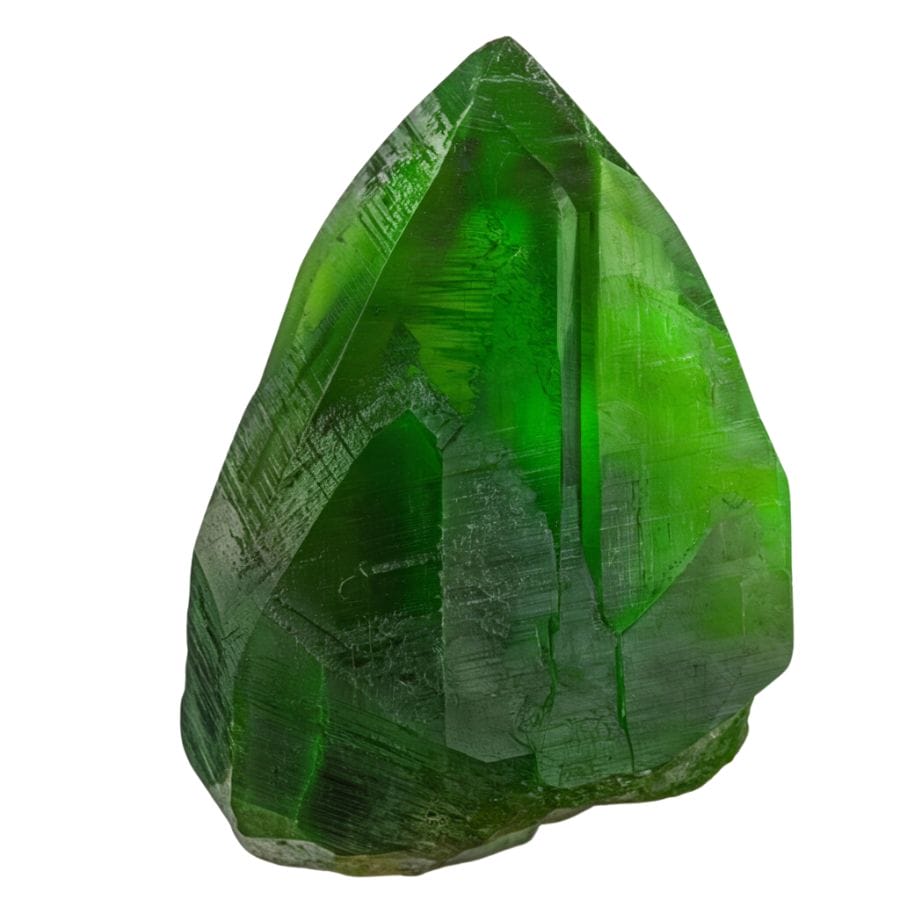
Peridot
Peridot is a type of olivine, a mineral that’s known for its vibrant green color. The exact shade of green can vary depending on the amount of iron in the stone.
Here in Texas, the peridot you’ll find tends to be smaller but just as beautiful, often coming in lighter shades of green.
These gems are usually found in basalt deposits, leftover from ancient lava flows, which makes finding them feel like a little piece of geological history. To explore some spots, refer to our Guide To Finding Peridot In Texas.
Why It’s Valuable
What makes peridot valuable isn’t just its beauty, although that’s a big part of it. Peridot is one of the only gemstones that comes in just one color, which makes it unique.
Plus, Texas peridot has a special charm because it’s often tied to the rugged landscapes and volcanic past of the region. Whether you’re a collector or just looking for a one-of-a-kind keepsake, peridot is a gem worth having.
Great Places to Find It in Texas
If you’re feeling adventurous and want to try your luck at finding peridot, you’re in the right place. Texas has several areas where you can hunt for these beautiful stones. Here are my top recommendations:
- Big Bend National Park: This area is known for its ancient volcanic activity, which makes it a prime spot for finding peridot. Just be sure to check the park’s regulations and stick to areas where rockhounding is allowed.
- El Paso County: The desert terrain here is home to basaltic rocks that sometimes contain small peridot crystals. The Franklin Mountains are a great place to start.
- West Texas Ranches: Some privately owned ranches in West Texas allow rockhounding for a small fee. These are great places to explore, and you might even find some larger specimens if you’re lucky.
Additional locations can be found in our Guide To Finding Peridot In Texas.
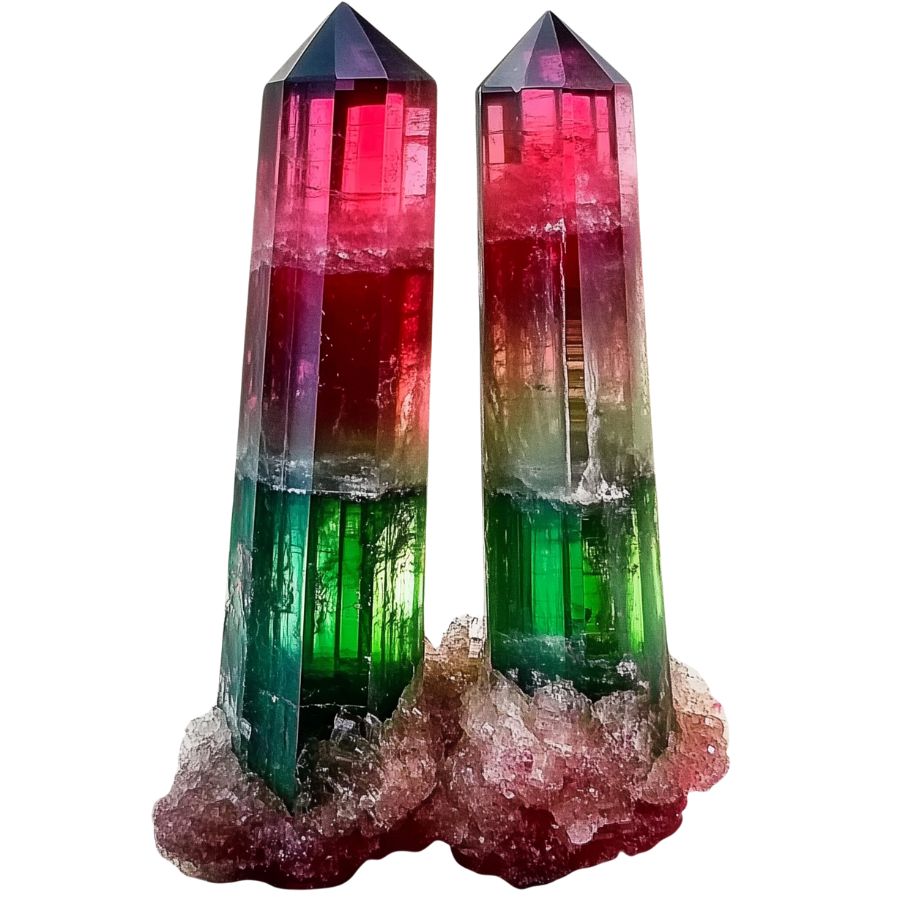
Tourmaline
Tourmaline is a crystalline boron silicate mineral that forms in a variety of colors depending on the minerals it’s mixed with.
In Texas, the most commonly found varieties are black tourmaline (schorl), which is prized for its deep, glossy color, and watermelon tourmaline, which has striking pink and green hues resembling its fruity namesake.
Some rarer finds may include shades of blue or green, but these are much less common.
Why It’s Valuable
Tourmaline is valuable for several reasons. Its wide range of colors makes it popular for jewelry, while its durability means it can stand up to everyday wear.
Black tourmaline, in particular, is also believed to have metaphysical properties, like warding off negative energy, which has made it a favorite in crystal healing circles.
Great Places to Find It Here
If you’re ready to try your hand at finding tourmaline, We’ve made it easy with our ultimate guide to finding Tourmaline in Texas. You can start from these locations:
- Llano Uplift Region: This area is a geological hotspot in Central Texas. Keep an eye out for tourmaline in the rock formations and pegmatites here.
- Big Bend National Park: While it’s more famous for its breathtaking desert landscapes, this park also has areas where you might stumble upon tourmaline, especially near old mining sites.
- Gillespie County: Known for its granite quarries, Gillespie County occasionally yields black tourmaline crystals. It’s a great spot to combine a rockhounding trip with a scenic drive through the Hill Country.
Browse through our Guide To Finding Tourmaline In Texas for other locations.
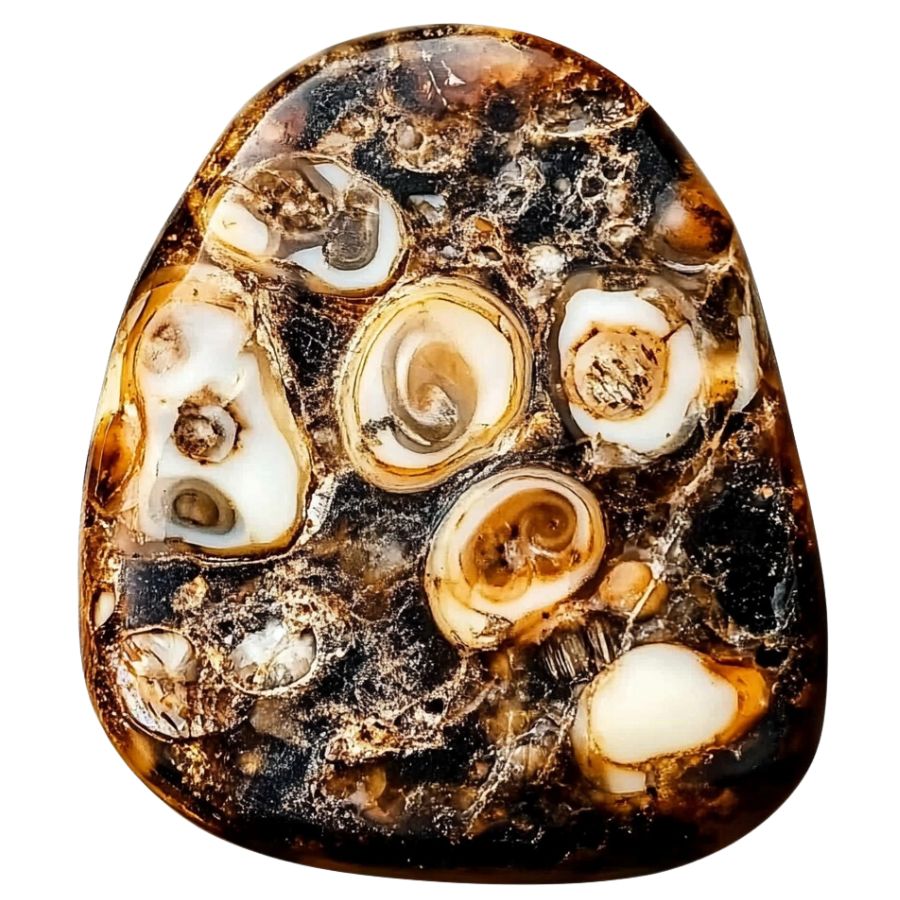
Agate
Agate is one of the most stunning gemstones you can find in Texas, known for its vibrant colors, intricate patterns, and polished beauty. It is a form of chalcedony, a type of quartz known for its hardness and durability.
Here in Texas, we’re lucky to have several unique types of agate to discover. If you’re interested in discovering these unique types, have a look at our complete guide to finding Agate in Texas.
Why It’s Valuable
Agate is prized for its beauty and versatility. Some people use it in jewelry, while others collect it for its natural patterns or for spiritual purposes.
Since agate is tough and can be polished to a high shine, it’s a favorite among rockhounds and lapidary artists. Plus, the wide variety of colors and designs makes every piece feel like a treasure.
Great Places to Find It Here
Texas is rich in agate hotspots, and there’s nothing quite like the thrill of finding your own piece of this gemstone. Here are some of my favorite spots:
- Rio Grande: The riverbanks and nearby regions of the Rio Grande offer an abundance of agates in various colors. Look for smooth stones with banded or mossy patterns along gravel bars.
- Glass Mountains: This scenic area in West Texas is a hidden gem for rockhounds. The rugged terrain is rich in plume agates and other unique varieties.
- Lake Buchanan: Along the shores of this Highland Lake, you can spot colorful agates mixed with other river stones.
For more locations check out our Guide To Finding Agate In Texas.
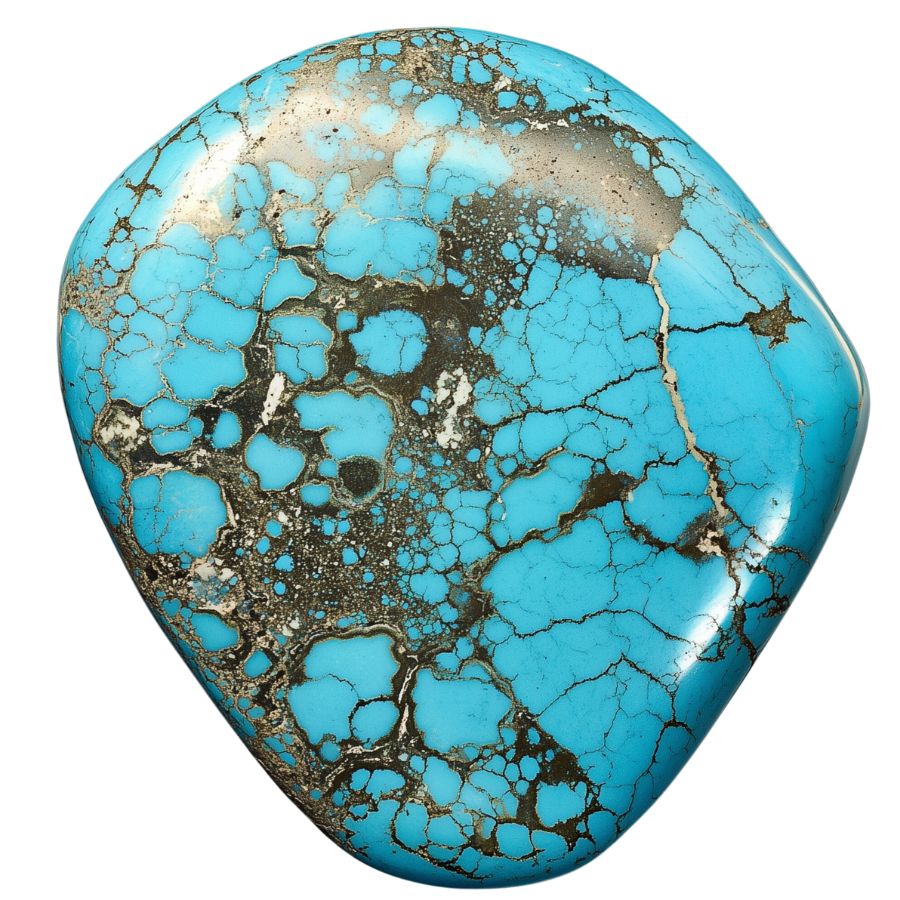
Turquoise
Turquoise is a mineral made up of copper and aluminum, which gives it that distinctive blue-green color. In Texas, the turquoise tends to be on the greenish side because of the specific minerals in our soil.
The stones are often smaller, but they have a unique, earthy tone that collectors and jewelers love. Read our Guide To Finding Turquoise In Texas for the best locations.
Why It’s Valuable
Turquoise isn’t just pretty; it has a lot of history and cultural significance. Native American tribes in the Southwest have used it for centuries in their jewelry and ceremonial pieces.
What makes it even more valuable here in Texas is its rarity. Finding turquoise in the state is like uncovering a little hidden treasure, and the quality of the stones can be quite high.
Great Places to Find It Here
If you’re ready to go turquoise hunting, Texas has some spots where you might just strike turquoise. Here are a few of the best places to start your search:
- Chihuahua Desert: The desert stretches across parts of Texas and is a fantastic spot for rockhounds. Bring your tools and patience because the turquoise here is worth the effort.
- Plata Verde Mine: This old mining area in West Texas is a turquoise enthusiast’s dream. Though it’s not actively mined anymore, you might be able to find some remnants if you explore the surrounding areas.
- Guadalupe Mountains: Known for their breathtaking views and rugged terrain, these mountains are also a great place to search for turquoise. Look for deposits in the rocky slopes and dry washes.
Additional spots are detailed in our Guide To Finding Turquoise In Texas.

Beryl
Beryl is a mineral composed of beryllium, aluminum, and silicate, and it forms in hexagonal crystals.
In Texas, the most common types of beryl you’ll come across are green beryl, aquamarine (a pale blue or greenish-blue variety), and sometimes even golden beryl.
These colors come from trace elements like chromium, iron, or manganese that are present during the crystal’s formation.
Why It’s Valuable
Beryl is valuable for a couple of reasons. First, it’s a gemstone, and high-quality pieces can be polished and used in jewelry, which makes it sought after by gem collectors.
Second, beryl is an important industrial mineral because it contains beryllium, a lightweight but strong metal used in aerospace and technology applications.
Great Places to Find It Here
Texas has some fantastic spots for finding beryl which we’ve listed in the guide: “Legit Places To Find Beryl In Texas“. Here are a few top recommendations if you’re ready to go on an adventure:
- Franklin Mountains: This rugged mountain range in far West Texas offers a great opportunity for rockhounds. Beryl has been found in pegmatite deposits here.
- Voca area: Pegmatites in this region have been reported to contain beryl, along with other interesting finds like tourmaline
- Burnet County: This part of Central Texas is rich in a variety of minerals, including beryl. Many private properties here have yielded interesting finds.
You’ll find more locations in our Guide To Finding Beryl In Texas.
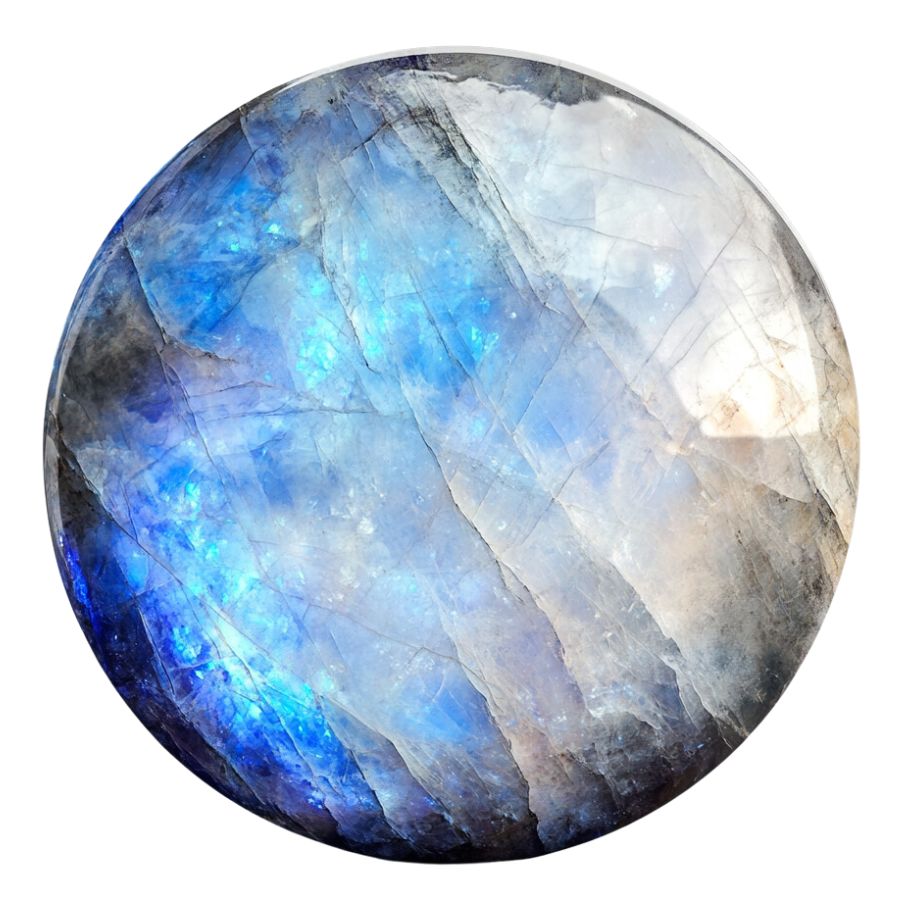
Moonstone
Moonstone is a member of the feldspar mineral family, famous for its glowing, pearly effect known as adularescence.
In Texas, you’ll mostly come across white and gray moonstones, but occasionally you might spot pieces with subtle rainbow flashes (Read through the Texas Moonstone guide for the best locations.)
Why It’s Valuable
Moonstone is prized for its metaphysical properties, believed to bring balance and inspiration. Texas moonstone is particularly valuable because it’s relatively rare and often found in unique, unpolished forms.
Whether you’re a collector or a jewelry maker, these stones are a slice of Texas geology to treasure.
Great Places to Find Moonstone in Texas
If you’re ready to start your moonstone adventure, here are some spots worth checking out:
- Palo Duro Canyon: The second-largest canyon in the U.S. offers more than breathtaking views. Search areas with exposed sedimentary layers for moonstone and other fascinating minerals.
- Chihuahua Desert near Alpine: This rugged desert region is a gem-hunting paradise. Moonstone has been found in rocky outcrops and dry creek beds, especially after heavy rains.
- Franklin Mountains near El Paso: The Franklin Mountains are known for their unique mineral deposits. Moonstone can sometimes be found in areas with feldspar-rich rock formations.
To find more locations check out the full list of Texas Moonstone locations here.
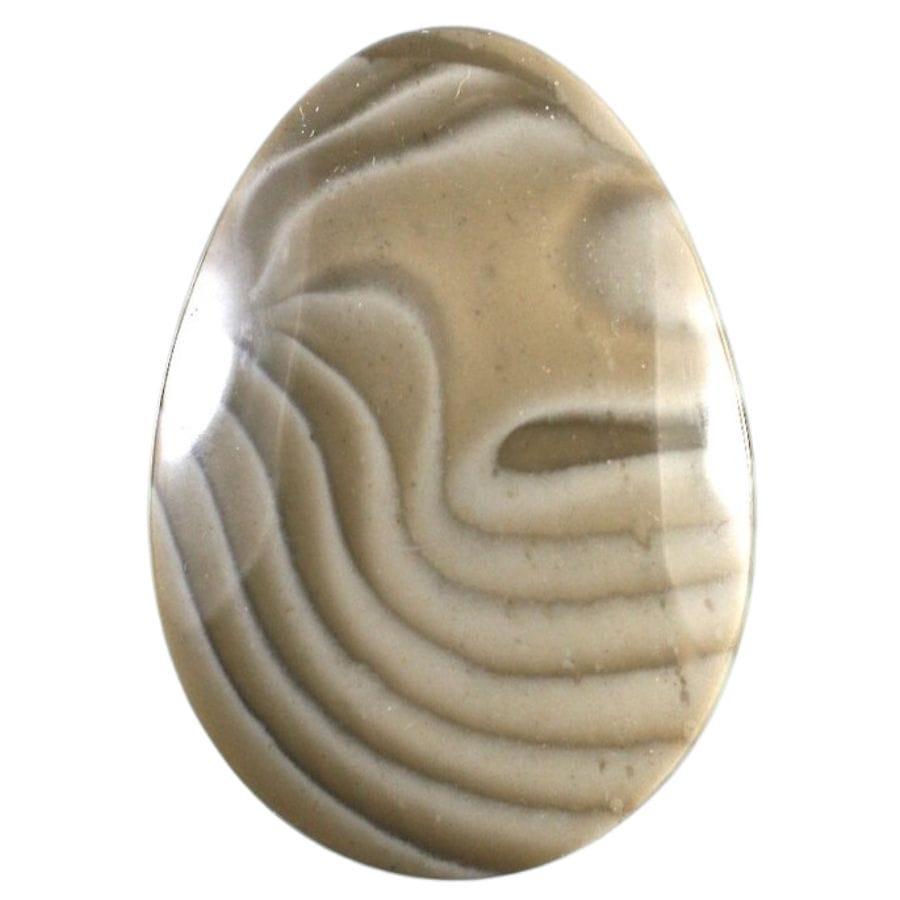
Chert
Chert is a type of hard, sedimentary rock made mostly of microcrystalline quartz. It forms over millions of years, often from the accumulation of silica from the remains of marine organisms like diatoms and radiolarians.
Chert is usually found in a variety of colors, including gray, white, red, and even green. Some types are smooth and glossy, while others have a more matte appearance. Its unique look and history make it fascinating, especially here in Texas.
Why Chert Is Valuable
Historically, Native Americans used Chert for tools, arrowheads, and knives because it fractures into sharp edges. Even today, flintknappers (people who recreate stone tools) and rockhounds love chert for its utility and aesthetic appeal.
It’s also sought after for jewelry-making and decorative purposes. If you’re into geology or history, chert is a fantastic way to connect with both.
Great Places to Find Chert in Texas
Texas is a goldmine for finding chert if you know where to look. And to know the best, look into our Guide To Finding Chert In Texas. Here are a few of the top spots:
- East Texas Gravel Bars: Rivers like the Sabine and Trinity are great for finding chert washed downstream. Search gravel bars and shallow riverbanks for smooth, water-worn pieces.
- Central Texas Limestone Beds: The Edwards Plateau and surrounding limestone formations are rich in chert. Look around creek beds and exposed rock outcroppings near areas like San Saba and Mason County.
- Palo Duro Canyon: This location in the Texas Panhandle has plenty of exposed sedimentary rock formations, making it a great spot to hunt for chert.
Find more locations by reading our Guide To Finding Chert In Texas.
The Tools You Will Need
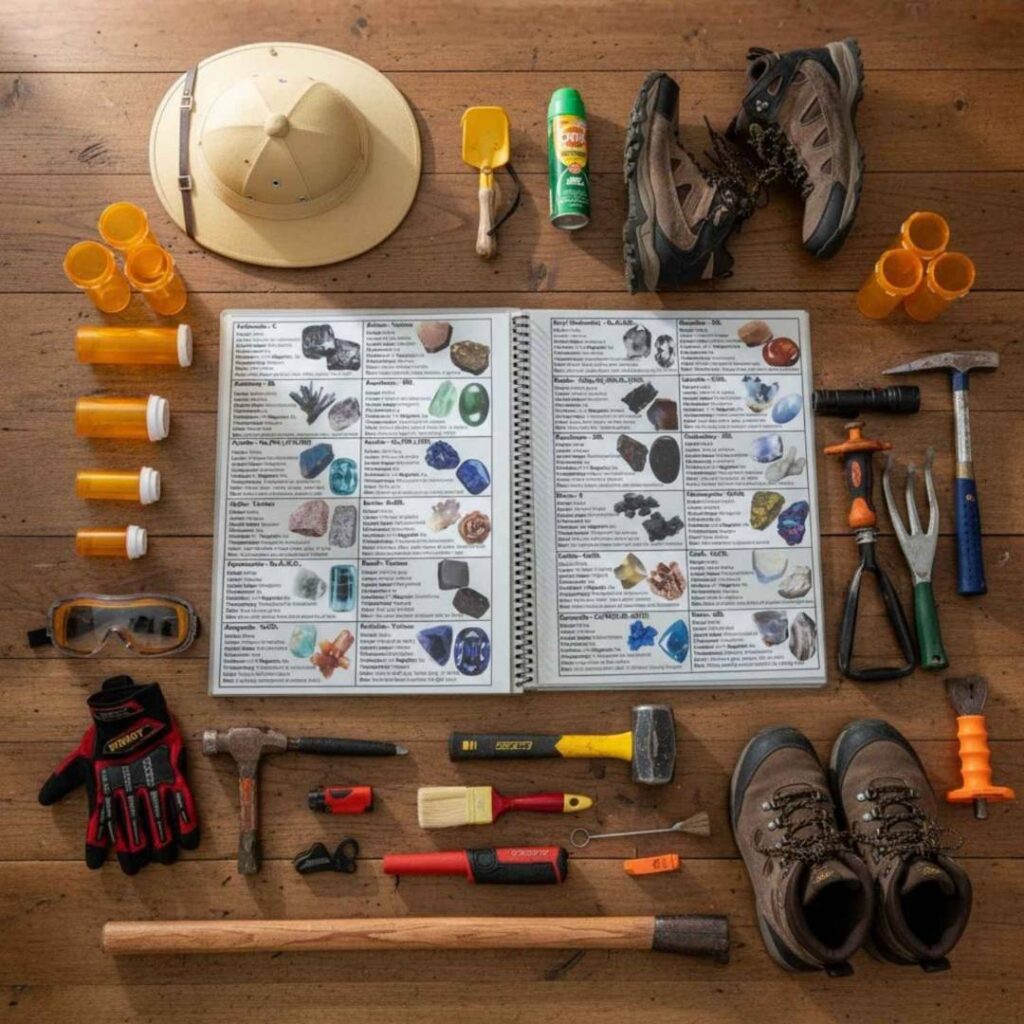
You don’t need a fancy setup to start gem hunting in Texas. With just a few simple tools, you can explore, dig, and discover amazing rocks and minerals without spending much money. These basics will help you get started, stay safe, and make sure you never miss a great find.
A Handy Field Identification Guide – Essential
The most important thing to bring is a good field guide. It helps you quickly identify what you’ve found so you don’t mistake an ordinary rock for something rare or walk right past a hidden gem. A field guide also saves time by showing clear photos and easy descriptions so you can learn as you explore.
Rock Chasing’s Texas Rocks & Minerals Identification Field Guide is perfect for this.
It’s waterproof, lightweight, and packed with clear photos of more than 120 Texas rocks and gems. It turns every trip into a real-life treasure hunt and makes identifying what you find fast and fun.
Find out HERE why thousands of Texas rockhounds swear by it.
Rock Hammer – Essential
A rock hammer is a must-have for loosening and breaking small pieces of stone. It helps you get inside rocks to see crystals or free specimens from hard ground. A basic rock hammer will last for years and lets you collect samples safely without damaging them.
Safety Glasses – Essential
Protecting your eyes is important when breaking or chipping rocks. Tiny pieces can fly up fast, and safety glasses keep them out of your eyes. They are lightweight, inexpensive, and make a big difference when you’re working with tools.
Small Shovel or Trowel – Recommended
A small shovel or garden trowel is great for digging around creek beds, gravel bars, or sandy areas. It helps you move dirt carefully so you don’t damage what’s hidden underneath. Many gem hunters use them for prying out geodes or clearing away loose soil to reveal crystals.
Collection Bag or Bucket – Recommended
You’ll need something sturdy to carry your finds. A small bucket, canvas bag, or even an old backpack works well. Keeping your rocks organized helps protect fragile specimens and makes it easier to look over your discoveries later.
Our Favorite Places For Gem Mining In Texas
Below is our Top 5 favorite places that adults and kids will both appreciate as they search for the different kinds of gemstones our state has to offer. The first 3 places are best for adults, who are wanting to experience some real gem mining, while the last 2 will be great for kids who are interested to do gem hunting for the first time.
Always Confirm Access and Collection Rules!
Before heading out to any of the locations on our list you need to confirm access requirements and collection rules for both public and private locations directly with the location. We haven’t personally verified every location and the access requirements and collection rules often change without notice.
Many of the locations we mention will not allow collecting but are still great places for those who love to find beautiful rocks and minerals in the wild without keeping them. We also can’t guarantee you will find anything in these locations since they are constantly changing.
Always get updated information directly from the source ahead of time to ensure responsible rockhounding. If you want even more current options it’s always a good idea to contact local rock and mineral clubs and groups
Palo Duro Canyon State Park

11450 Park Road 5 Canyon, TX 79015
Palo Duro Canyon State Park, located in the Texas Panhandle near Amarillo, is known for its spectacular landscapes, unique geology, and gem mining opportunities. The area has a long history of human activity, with evidence of 12,000 years of human occupation. It was first explored by the Spanish in 1787 and, by the mid-19th century, it was home to several Native American tribes. In 1934, it became one of the first state parks in our state. Today, you can explore this beautiful canyon and its amazing gemstones.
The Types of Gems Found In The Palo Duro Canyon State Park
Aside from its outstanding beauty, this place also offers some of the coolest gemstones that can be found in the region, starting with the following:
- Aragonite
- Calcite
- Celestite
- Dolomite
- Gypsum
- Quartz
The Best Time To Visit Palo Duro Canyon State Park
If you’re planning to visit this place, the best time would be during spring and fall months. In the spring, temperatures are mild and the weather is usually dry, while in the fall, temperatures are cooler and the foliage is usually at its most vibrant. While gem mining can be done year-round, these two seasons offer some of the most ideal conditions for a successful, comfortable but rewarding outcome.
You've probably walked past some incredible rocks and minerals. You need this guide 👇👇👇
We've all come across a cool rock that we could have sworn was rare or valuable but couldn't tell what it was.
If you're not 100% confident that you know every rock and mineral in Texas this guide is for you.
The Texas Rocks & Minerals Field Guide helps you ID what you find in seconds, from Hill Country agates to Llano granite, with crisp photos, simple charts, and zero fluff.
→ Grab your copy today and spot your next gem before anyone else does.
What this guide unlocks:
🧭 Confidence in the field — ID rocks fast and move on to the next find
🎒 Lightweight and waterproof — built for trails, not coffee tables
🌅 Weekend adventures — find treasures on rivers, ranches, and roadsides
🤠 Texas pride — explore the real geological beauty of your state
🔥 Motivation — every trip outside feels like a hunt for hidden gems
Stillwell Ranch
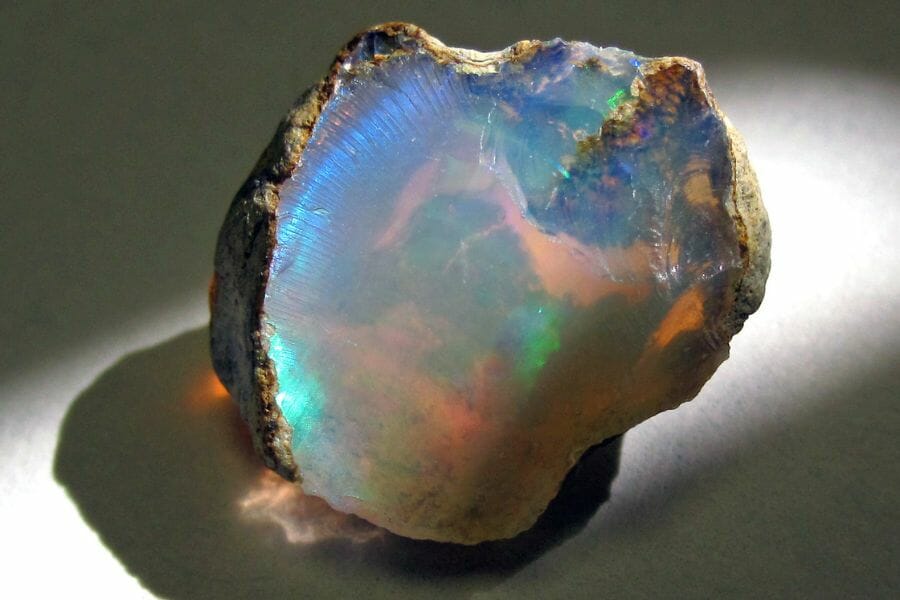
Alpine, TX 79830
Stillwell Ranch, an outdoor destination in Mason County, is situated on a 200-acre ranch with a scenic backdrop of the Llano River and the Hill Country. The ranch was established in 1867 by German settlers who came to the area for mining opportunities. It has been in operation for more than 150 years, and remains to be a popular destination for gem hunting today. You can search for gems here with tools provided by the ranch. You can also try out their guided tours of historic buildings and educational programs about geology and mineralogy. This is also an excellent area to find crystals in Texas.
The Types of Gems Found In The Stillwell Ranch
This place is a great source of gemstones from the Big Bend area and West Texas. It is most known for having the following:
- Agates
- Amethyst
- Calcite
- Chalcedony,
- Cinnabar
- Garnet
- Opal
- Quartz
The Best Time To Visit Stillwell Ranch
Anytime during spring and fall, when the weather is mild and the ground is dry, is the best time to visit if you want to go gem mining here. Compared to other seasons, the friendly weather and temperature during spring and fall will be more comfortable as you dig and do your search for gems.
Lindsay Ranch
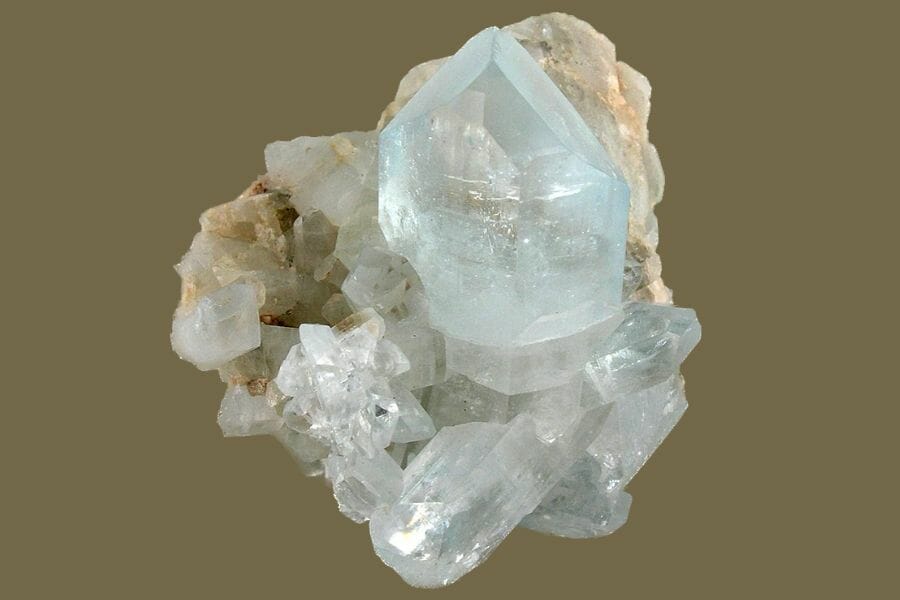
460 Lindsay Ranch Road Mason, TX 76856-3808
Located in the heart of Texas Hill Country just outside of Mason, Lindsay Ranch has been owned by the same family since 1881. Being home to many rare and more common gems, the ranch is a popular favorite among many who are looking to find some of the coolest gems in the region.
The Types of Gems Found In The Lindsay Ranch
This ranch is most well-known for its abundance in Topaz, which are often found in or around the Comanche Creek.
The Best Time To Visit Linday Ranch
If you want to visit, the best time will be during the spring or fall. The temperatures are milder and the humidity is lower, making it more comfortable for outdoor activities. The weather is also typically drier in the spring and fall, so there is less chance of rain or flooding which could disrupt gem mining activities.
North Texas Jellystone Park – Great for kids
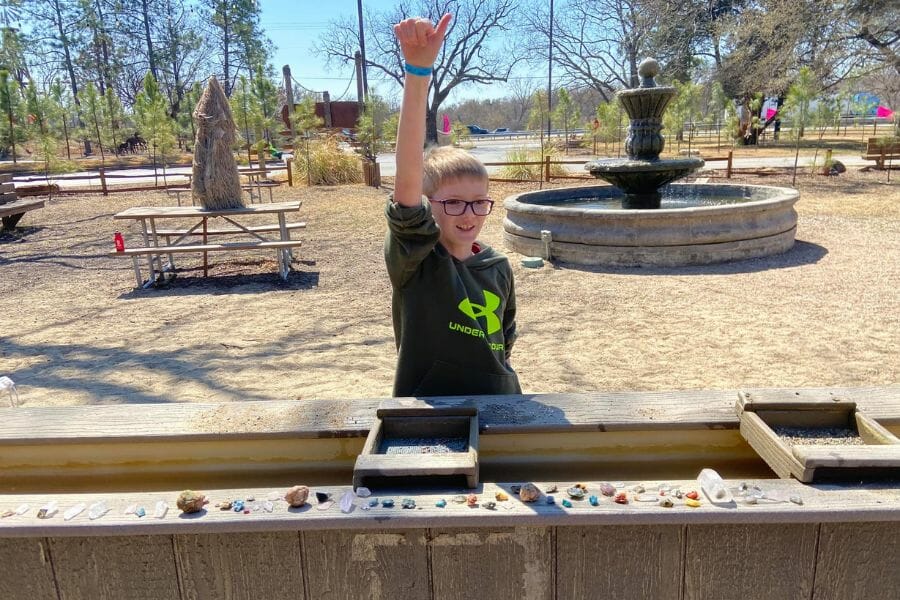
2301 S Burleson Blvd Burleson, TX 76028
North Texas Jellystone Park is a family-friendly destination that offers a variety of activities, including gem mining. The park has nearby creeks and streams where children and adults alike can search for gems. They also have different options for mining rough bags filled with gems that kids can sift through in the park’s mining sluice. After collecting their finds, the kids can head over to the identification station to classify them.
The Types of Gems Found In The North Texas Jellystone Park
This is a great venue to introduce kids to gemstones and to the hobby of gem mining as there are different kinds of gems that can be found while they sluice here.
The Best Time To Visit North Texas Jellystone Park
If you want your kids to enjoy this place, the best time to visit would be during the spring or fall. The summer months can be very hot and humid, while the winter months can be cold and wet. Spring and fall are usually milder and more pleasant, making your trip at this time here more conducive.
Katy Rock Shop – Great for kids

535 Pin Oak Rd, Katy, TX 77494
Katy Rock Shop is a family-owned and operated business that has been in operation since 1994, when the owner and founder opened it with the goal of providing quality gem-mining experiences to children and adults alike. The shop offers a variety of services, including gem mining, among others. The shop also sells rocks and minerals from around the world as well as supplies needed for rock activities.
The Types of Gems Found In The Katy Rock Shop
Each mining rough from this place contains different kinds of gemstones that kids can sift through, such as the following:
- Amazonite
- Amethyst
- Apatite
- Calcite
- Chalcedony
- Chrysocolla
- Citrine
- Garnet
- Jasper
- Moonstone
- Quartz
- Sapphire
- Topaz
- Turquoise
If you’re having a hard time distinguishing some of the more common rocks that seem to be very similar, here are a few guides that can help you out:
The Best Time To Visit Katy Rock Shop
If you want to visit Katy Rock Shop with kids, the best time to do it would be during the spring or fall months. The summer months can be very hot and humid, while the spring and fall months offer milder temperatures which will make their experience in the place more enjoyable and memorable.
Other Great Options For Real Gem Mining in Texas

Lucky for you, our favorite picks in our state are not the only one where you can do gem mining. Here are more great options of places you can explore to find gems. We also included what kinds of gems you can find in each place so that you’ll have an idea of what gemstones you might go home with before even going there.
- Woodward Ranch – Red Plume Agate
- Seaquist Ranch – Topaz
- Bar M Ranch – Topaz
- Baringer Hill Minerals – Fluorite, Quartz, Topaz
- Glass Mountains – Agate, Chalcedony, Jasper, Quartz
- Alpine – Agate, Chalcedony, Jasper, Moonstone, Quartz
- Agua Fria Ranch – Agate
- Dog Canyon – Barite
- Terlingua Creek – Agate, Amber, Chalcedony, Jasper
- Plata Verde Mine – Anglesite, Azurite, Barite, Chrysocolla, Malachite, Microcline, Quartz
- Seven Heart Gap – Barite
- Sierra Blanc – Turquoise
- Chinati Mountains – Chalcopyrite, Fluorite, Pyrite, Sphalerite, Smithsonite
- Little Lucy Creek – Celestite
The Top Public Gem Mining Locations in Texas

For families who are planning to introduce their kids to the wonders of gem mining first-hand, here are more family-friendly places where both you and children will enjoy.
- Two Rivers Mining Co. – 5640 S Interstate 35 New Braunfels, TX 78132
- Natural Bridge Caverns – 26495 Natural Bridge Caverns Rd, San Antonio, TX 78266
- Wonder World Cave – 1000 Prospect St. San Marcos, TX 78666
- Made In The Shade – 118 E.Henderson st. Jefferson, TX 75657
Texas Gem Mining Laws And Regulations
The Texas Parks and Wildlife Department (TPWD) has established regulations to ensure that the gem mining is conducted in an environmentally-responsible manner and that resources are protected. The following regulations apply to recreational gem mining activities in our state:
- Permit Requirements: A permit from the TPWD is required for activities on public lands.
- Location Restrictions: Gem mining is limited to areas where this has been authorized by the applicable land management agency or where it is not prohibited by law or regulation.
- Equipment Requirements: All equipment used for the activity must be approved by the applicable land management agency and must meet all applicable safety standards.
- Environmental Protection Requirements: All activities must follow best practices to protect natural resources, including avoiding contact with sensitive habitats, minimizing soil disturbance, preventing sedimentation runoff, and properly disposing of waste materials.
- Reporting Requirements: Gem miners must report any significant discoveries of valuable gems found during their activity to the applicable land management agency as soon as possible.
For more information on the state’s gem mining laws and regulations, visit the Texas Parks and Wildlife Department’s link above.
Additional places to mine for gems in nearby states
Check out our guides for nearby states if you’ve already tried all of our suggestions above or if you’re planning a trip outside the state:
If you have any recommendations we haven’t covered please leave them in the comments below!



